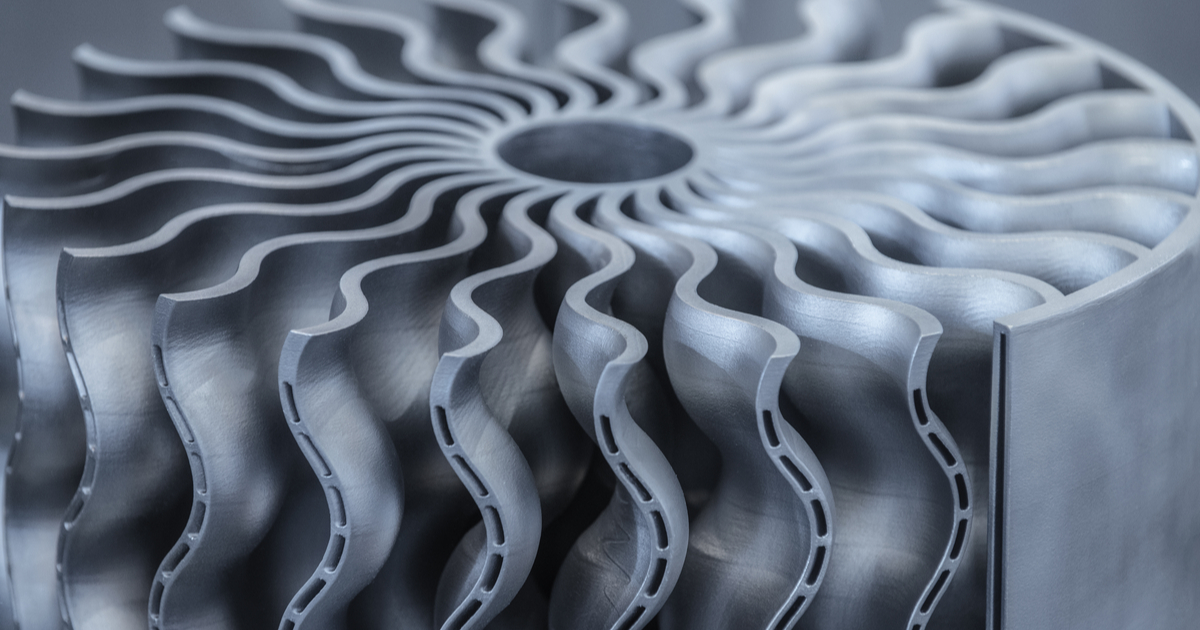Advancements in 3D Printing are Revolutionizing the Aerospace Industry

There’s something in the air that is revolutionizing aircraft production. Advances in 3D printing—or additive manufacturing (AM)—are catapulting demand for lightweight 3D printed components to such a high degree that the aerospace market is projected to grow beyond $3 billion this year and reach $6.75 billion by 2026. So, what is driving this unprecedented demand for AM components in the aerospace industry?
Here, we will explore the latest advancements in AM and discuss the reasons why 3D printing is transforming the current trends in aerospace and space manufacturing.
Technology beyond tradition
Additive manufacturing is not a new concept. In recent years, in fact, aircraft manufacturers have seen how this technology has advanced beyond its traditional scope and reached a stage for aerospace applications. Industry giants that include Boeing, Northrop Grumman and Raytheon are regularly producing tens of thousands of 3D printed aircraft. Having seen an increase for AM in 2021, the space industry is right there with these companies. Jordan Noone, co-founder of Relativity Space, said using 3D printed components is the new baseline for engines. He estimated that every new rocket engine that entered the market last year had 3D printed components on it. Also reaping the rewards are engineers who are discovering how 3D printing can solve some of their most complex issues. The hope for 2022 is that Design for Additive Manufacturing (DfAM)—the process of adjusting a design to make it less expensive, faster and more effective—will go by the wayside and yield more design freedom. Engineers have been tasked with conceding to the manufacturability of a product instead of designing the best part possible. Industry experts believe one of the keys to moving 3D printing for aerospace and space forward is to give engineers the design freedom to print the parts they need and want—including lighter ones—that perform better and even consolidate into a single component.
To summarize, here are some of the key reasons why aircraft makers are embracing AM technology:
- Design freedom
- Ability to create complex, customized and one-of-a-kind parts
- Cost reduction
- Lighter in weight
Investing in the future
As aircraft production experiences its greatest transformation, aerospace original equipment manufacturers have met the demand by investing in large-scale AM machines and projects to achieve the revolutionary part consolidation requirements for new generation aircraft. In 2021, Boeing, along with many of its competitors, kept its AM division busy by establishing a fully controlled and distributed 3D printing network. Boeing produced parts for its aircraft remotely and securely on EOS 3D printers directly, along with 3D printing aerospace-grade materials to make their components.
Achieving a sustainable process
Industry experts agree that sustainable, biodegradable and bio-social printed materials will play a major role in the future of AM. That’s because additive manufacturing uses considerably less material than traditional manufacturing processes. This means the upfront process of mining raw materials, converting them to a printed material and transporting them to the point of printing is greatly reduced. Optimizing the part makes it weigh less and also enables its functionality to operate on a smaller space. The final result is a vehicle that is more streamlined, has less drag and requires less fuel. Although an increasing number of manufacturers have adopted sustainable 3D printing practices, some are raising the bar. Boeing, for example, recently implemented an AM sustainability initiative to examine the benefits of different manufacturing process scenarios. Boeing has also focused its attention on sustainability by adopting sustainable 3D printing practices such as:
- Recycling its powder and filter condensate
- Expanding the use of sustainable titanium powders in 3D printing processes
- Recycling support structures
- Designing parts so support structures are not needed
- Using simulations and predictive modeling to ensure quality and first-time success for AM builds, reducing build iterations that create waste
- Producing lighter-weight parts that can perform the function using less fuel
Join the next generation of 3D innovators
Do you have a passion for computer-aided design (CAD)? You could be trained and working in the field quickly. Our certificate in Computer-Aided Design (CAD) for Additive and Subtractive Manufacturing is designed with a strong career orientation that trains students to become experts in their fields, preparing them for entry-level jobs upon graduation. We also offer a bachelor’s degree in Mechanical Engineering: Computer-Aided Design which would give you the ability to design components of a mechanical system using the industry’s latest computer design programs. Vaughn also hosts annual manufacturing conferences where the latest industry knowledge, information and tools are shared across the community.
Looking for a career in engineering and technology, management or aviation? Vaughn has the degree programs that can help prepare you for a lifelong futureproof career. Discover the possibilities. Apply today.

